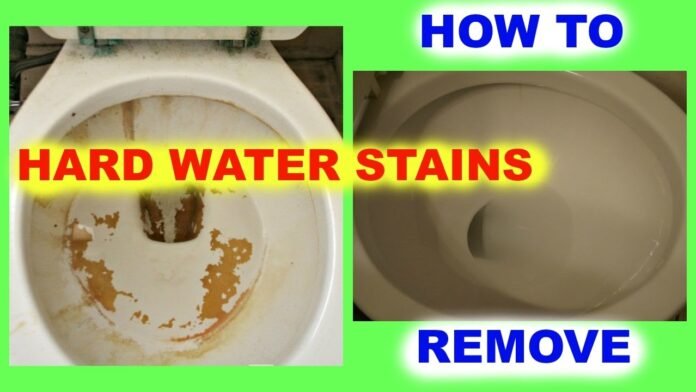Is there a housekeeping task more tedious than cleaning the toilet? Most homeowners would answer “no.” Cleaning a bathroom can be frustrating. From the difficulty of moving around in a small space to inhaling toxic fumes from cleaning fluids to having to clean up after cleaning, It can be even more difficult if you have persistent mineral stains.
Mineral and rust staining in your best flushing toilet or bathtub, greenish stripes, or a brown ring or lime scale is not caused by something you are doing wrong with your cleaning routine. It is simply due to something in the water. Minerals such as calcium, magnesium, iron, and lime naturally found in hard water attach to almost any surface they touch. Some minerals can still get through despite the fact that water systems and filters are in place to soften hard water. Iron meets air and the rust-colored stains that you see under your faucets and in your toilet are a sign of this.
Limescale is usually indicated by stains on the toilet that is either green or brown. Limescale forms when hard water evaporates, leaving behind a mineral buildup. It dries and picks up dirt particles, which causes the stain to build up layer by layer on the inside of your toilet bowl. Yuck!
These stains can be removed with many products available in stores and at home. The bad news is: The bad news? Stains are removed with acid. Muriatic acid is the most powerful and deadly chemical. We do not recommend that you use this solution unless you are a professional. Lime-A-Way (which stands for Calcium-Lime-Rust) is an option if you are looking for an off-the-shelf product. The Works and Barkeepers Friend are recommended as well. Vinegar and perhaps your favorite beverage can be used as an organic home remedy. Learn more.
Tips to Remove Mineral Stains from Your Toilet
When you are ready to clean your toilet, the first thing to do is to turn off the main water valve. It is located behind the toilet. To stop it, turn it clockwise. Next, use a cup or a bucket to drain as much water from the bowl as possible.
Use nylon bristles if you are using a brush. Old-fashioned brushes with wire bristles can scratch and damage the porcelain. You might also consider using a pumice rock instead of a brush. It’s slightly more abrasive but not enough to cause damage. If you decide to go this route, ensure that there is some water in your toilet. This helps to prevent the pumice from scratching the porcelain.
Follow the instructions on any commercial cleanser. You can also use natural products that you likely already have at home.
- Add 1 to 2 cups of vinegar and baking soda to the toilet bowl. Let the solution sit for approximately 15 minutes after swirling it around the bowl for a few seconds. Scrub the stain with a pumice stone or the best toilet brush. If the stain doesn’t come off with lemon juice, try adding it to the water. Flushing the toilet may be necessary if the water is off.
- Coca-Cola: Fill the bowl with Coca-Cola after emptying it. Using your pumice, scrub the stain off the next day.
Here’s what you should not do:
Do not use bleach in your toilet bowl. It will not remove stains and can cause damage to the septic system. Never mix bleach with ammonia. There is a risk of respiratory tract irritation and even death from the fumes. Avoid using metal scrubbers or scrubbers with extreme abrasion. It will ruin the porcelain.
